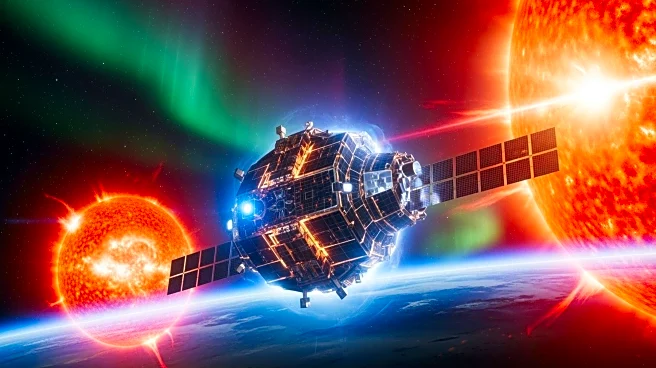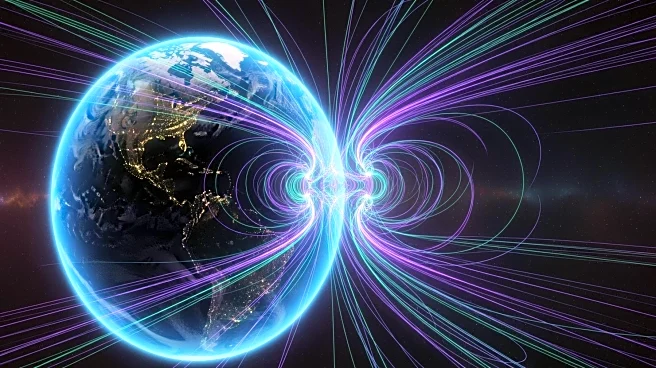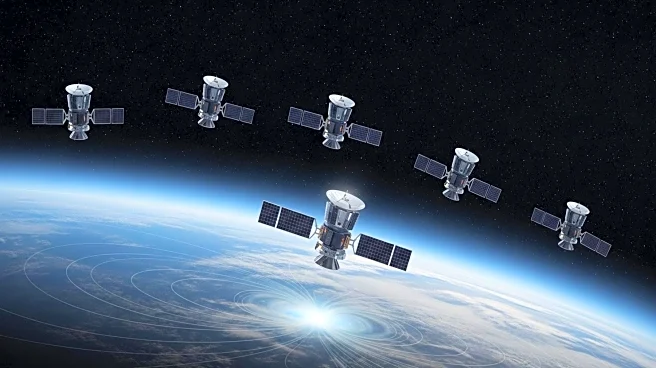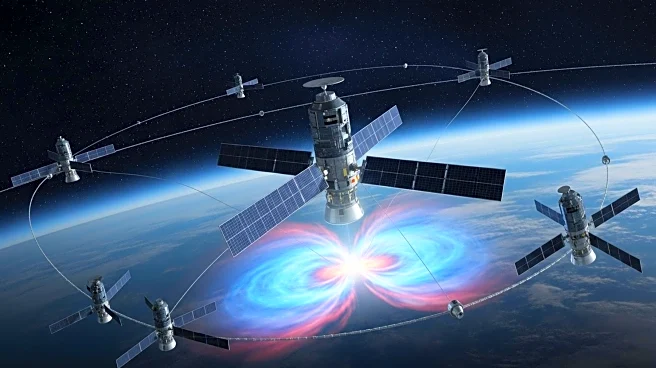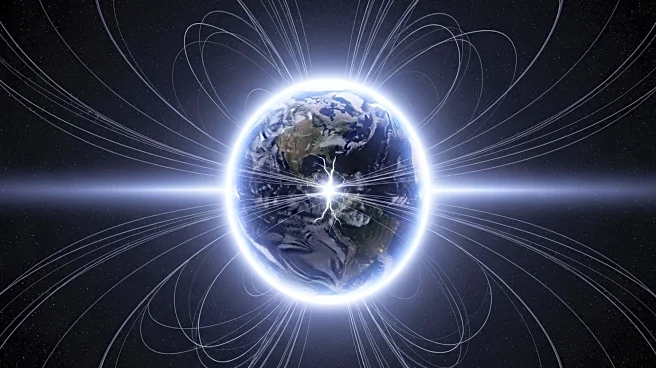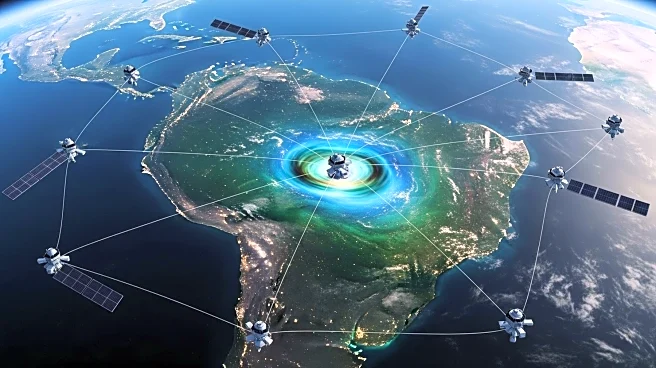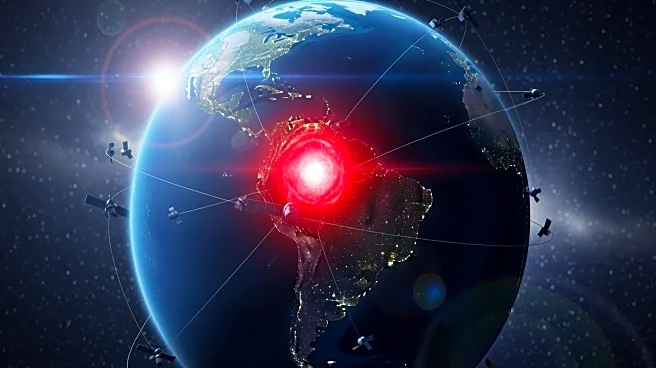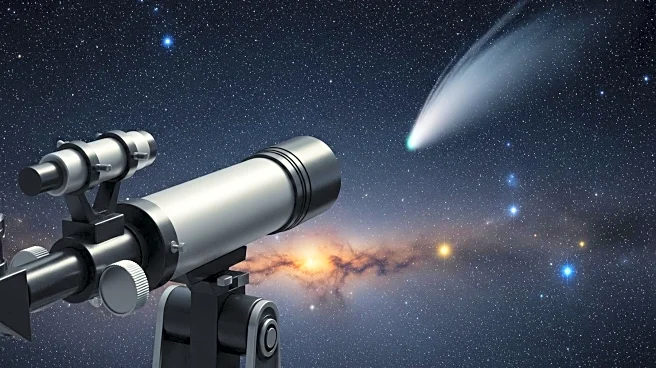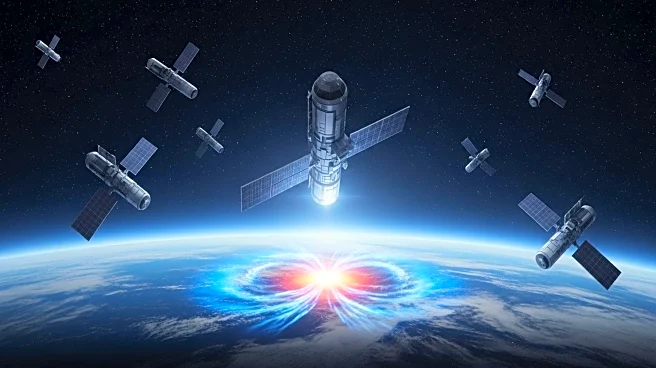What's Happening?
The European Space Agency (ESA) conducted a simulation of an extreme solar storm to test the resilience of spacecraft operations. The simulation, inspired by the Carrington event of 1859, aimed to prepare
ESA's mission control for potential anomalies during satellite operations. The exercise involved the Sentinel-1D satellite, scheduled for launch on November 4, 2025, and replicated the effects of a catastrophic solar storm, including severe electronic disruptions and loss of satellite navigation. ESA's Space Safety Centre, inaugurated in 2022, played a central role in the exercise, coordinating with various ESA Earth-orbiting missions to enhance realism and simulate cross-mission impacts.
Why It's Important?
The simulation underscores the importance of preparedness for extreme space weather events, which can have significant impacts on satellite operations and infrastructure. Such events can increase satellite drag, leading to collision risks and shortened satellite lifetimes due to increased fuel consumption. The exercise provided valuable insights into how ESA can better plan and react to real-life contingencies, highlighting the need for improved space weather forecasting capabilities. The development of the Distributed Space Weather Sensor System (D3S) and the Vigil mission are part of ESA's efforts to enhance resilience against solar storms, protecting critical infrastructure and ensuring the safety of European citizens.
What's Next?
ESA plans to launch the Vigil mission in 2031, which will observe solar activity from Lagrange Point 5, providing advance knowledge of potentially hazardous solar events. This mission aims to offer invaluable time to protect spacecraft and ground infrastructure. The insights gained from the simulation will contribute to the development of European-wide space weather operational services, refining procedures and improving resilience against extreme solar storms.
Beyond the Headlines
The simulation exercise highlights the broader implications of space weather on global infrastructure, emphasizing the need for international collaboration in space weather monitoring and preparedness. The potential impacts of a solar storm extend beyond satellite operations, affecting power grids and communication systems on Earth. As space weather events become more frequent, the importance of developing robust systems to mitigate their effects becomes increasingly critical.
